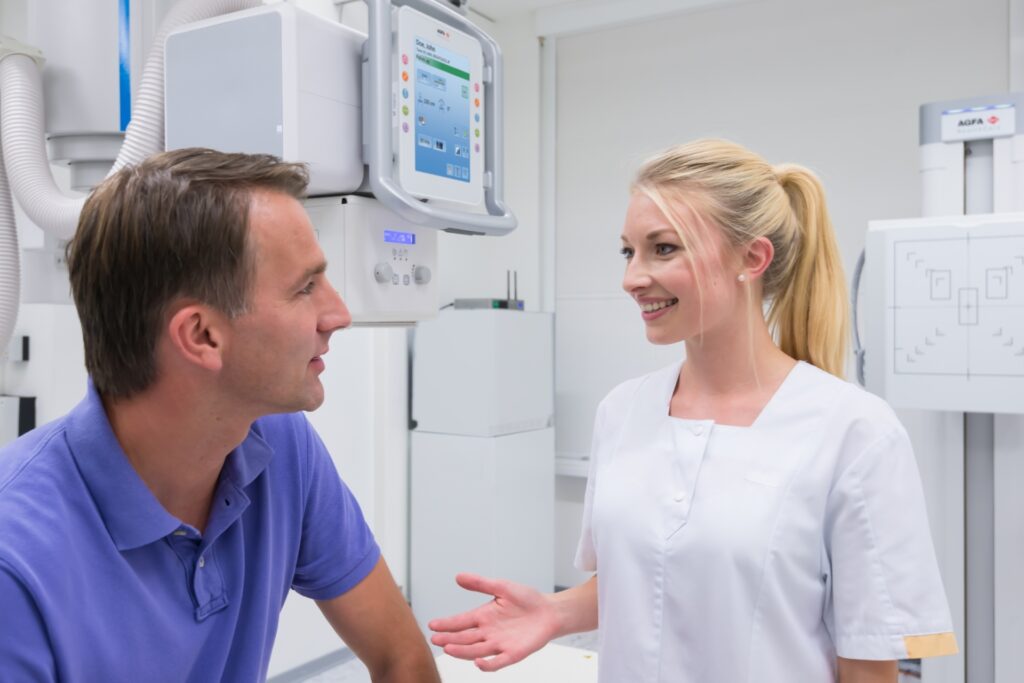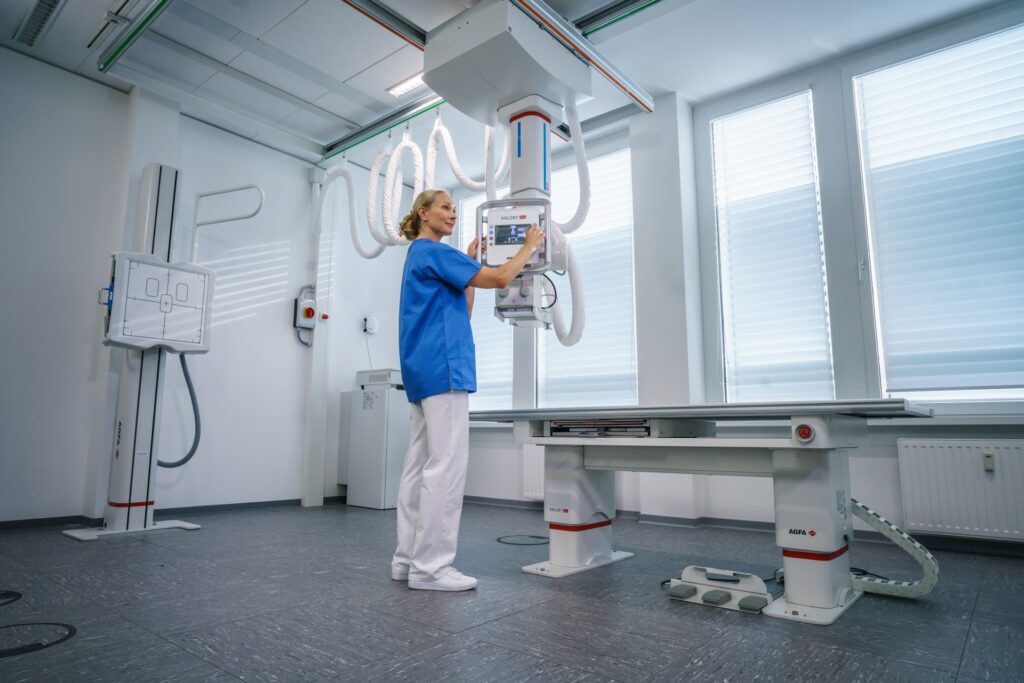

People-centered experience
Modernizing the workflow to support a patient-focus culture
Freeing time for better patient interactions
The short time the radiographer spends with the patients is a major opportunity to improve patient satisfaction and outcomes by actively listening to them, answering to their questions, and putting them at ease.
Did you know?

In 2006
the Radiological Society of North America (RSNA) established the first steering committee on patient-centered radiology. Since then the subject, has become a key focus in research and clinical practice to
- increase patient engagement and satisfaction
- enhance patients’ understanding and comfort with radiology tests and procedures
- empower them to make better-informed decisions

Technologists behaviour
largely shapes the patient experience in radiology.
In one case observed in a study at a large academic institution, the behaviour of the radiology staff was mentioned in 74% of outpatients feedback comments, far more frequently than waiting times, comfort during test, staff competence, or reporting quality [2].
Humaneness is a key driver of patient satisfaction, especially for pediatric patients, elderly patients [1] [3].

Lack of time with the patients
is a high source of stress for radiographers [5], together with the pressure to work fast and the increasing workload.

technologist jobs vacancy rate in 2023
is an all-time-high in the US according to the ASRT Radiologic Sciences Staffing and Workplace Survey.
Spikes in vacancy rate reflects a larger scale radiography workforce crisis that affects other countries e.g. in England and South Africa face an average vacancy rate of 13% [4]
Agfa supports patient-centric mentality
Our x-ray solutions are designed with functionalities to alleviate the technologist from some mental or physical tasks, so that he can focus on the patient.
- Reducing mental load by automating tasks
Automatic correction of image orientation
Focus on the patient
Which side of the panel is pointing up does not matter anymore, SmartRotate™ automatically presents the image ready for viewing
Reduce stress
In case of multi-trauma patients in emergency, radiographers can acquire x-rays faster & shorten the interruption of the clinical team
Automatic tube and panel positioning
Reduce the number of steps for the exam preparation
FLFS workflow can be fully automated. Wallstand bucky can be automatically angulated
Accelerates the exam preparation
Tube, panel and collimation can be pre-positioned according to the exam selected to limit the manual intervention to fine tuning only. Panel and Tube can be automatically tracked in horizontal and vertical directions.
2. Prioritizing patient care
Critical findings alerts at point of care
Accelerate communication between radiology & clinical teams
After receiving an alert, radiographer can directly contact the radiologist or referring physician to prioritize a patient
Improve delivery of patient care
During overnight hours, referring doctor gets information from the AI to decide how to proceed until the radiology report is available
Avoid patient recall
While the patient is still in the x-ray room, the radiologist or physician can ask for extra exposures e.g. a lateral chest
More on CriticalScan™, powered by Lunit INSIGHT CXR3. Improving the patient & technologist comfort

Patient access
Facilitate wheel chair access
Open space below the Valory table enables the patient to get closer
Easy low-mobility patient access
Ultra low step-up height facilitates the patient installation in the DR800 R&F room
Technologist comfort
Keeping constantly a close eye on the patient
Live camera view enables the technologist to check remotely the patient positioning from the workstation before the exposure
No efforts to move the tube head
ZeroForce Technology offers smooth operation with almost zero effort for manual movements
External references
[1] Blodt S, Muller-Nordhorn J, Seifert G et al. Trust, medical expertise and humaneness: A qualitative study on people with cancer’ satisfaction with medical care. Health Expect 2021; 24: 317–326. doi:10.1111/hex.13171
[2] Andrew B. Rosenkrantz, Kristine Pysarenko, The Patient Experience in Radiology: Observations From Over 3,500 Patient Feedback Reports in a Single Institution , Journal of the American College of Radiology, Volume 13, Issue 11, 2016, ISSN 1546-1440, https://doi.org/10.1016/j.jacr.2016.04.034.
[3] Andrea G. Rockall, Caroline Justich, Thomas Helbich, Valerie Vilgrain, Patient communication in radiology: Moving up the agenda, European Journal of Radiology, Volume 155, 2022, 110464, ISSN 0720-048X, https://doi.org/10.1016/j.ejrad.2022.110464.
[5] Rutter DR, Lovegrove MJ. Occupational stress and its predictors in radiographers. Radiography2008;14:138–143.






